Questions of the Week: May 3, 2018
I decided to cover five different questions this week. Each is a legitimate candidate for top question of the week, since each comes up frequently. I’m going to give you quick links to answers where I am able. It should make it all manageable.
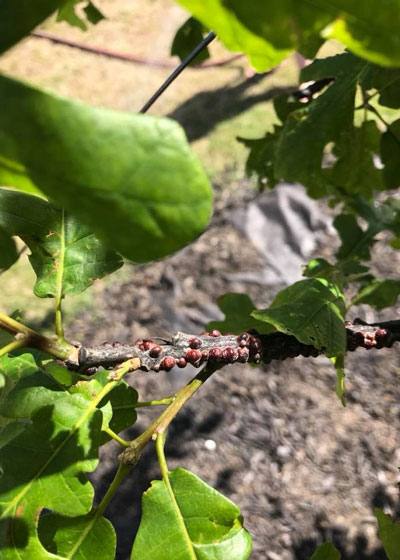
Scale insects on bur oak
“What’s this on the twigs of my bur oak?”
This photo was posted on my Facebook page along with the comment that the little half-globes just contained dust. Ladybugs were also nearby. I told the FB friend that these are the outer shells of scale insects. The ladybugs (beneficial insects) have devoured the scales, so they present no further risk to the tree. There is no call to action here. For what it’s worth, this scale insect isn’t uncommon. However, it rarely does any harm.
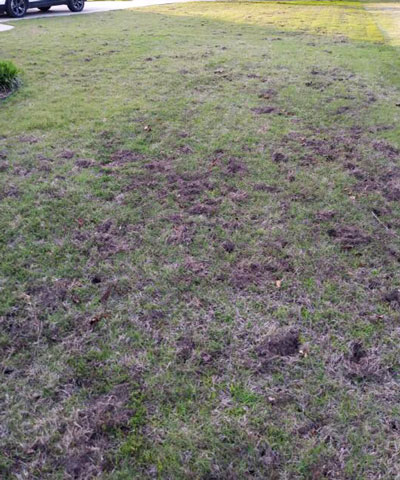
“Neil, we’re being overrun with armadillos in our lawn. What can we do?”
We live in a rural area, and we share in this problem. I can speak from firsthand experience. Here is what I have in the FAQ pages of my website.
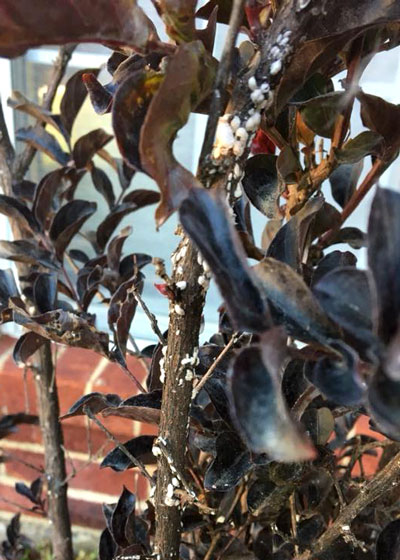
“Neil, what is all over my crape myrtle? What will eliminate it?”
This is crape myrtle scale, and we have really good information on the website of our Crape Myrtle Trails of McKinney. Scroll down about halfway on this page. Keep in mind as you read that it is much more aesthetic than it is threatening. Your plants will survive it. With a little care you can keep them looking very good.
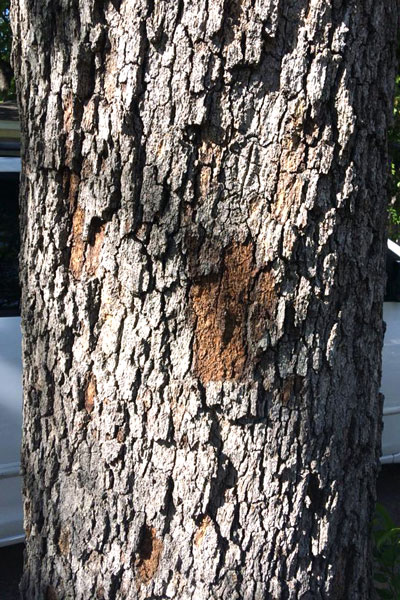
“Neil, what is happening to the bark of my tree? Do I need to worry?”
Hypoxylon canker was relatively common following the great drought of 2011. Trees such as pecans and oaks were put under great stress, and the subsequent weakening caused the loss of thousands of them across the eastern half of the state. Here is great information on the website of Arborilogical Services, my longtime advertiser and tree care professionals in the DFW area.
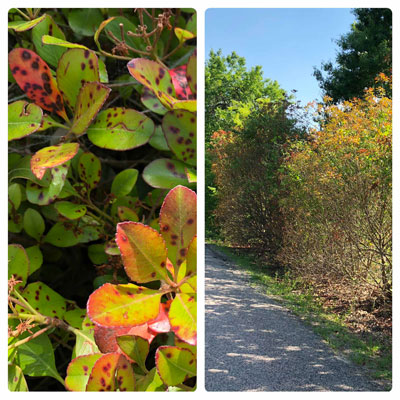
“Neil, what is killing my Indian hawthorns and redtip photinias?”
These questions popped up on Facebook in the past few days, so I put up the following information.
“Garden Tip: On the left: Indian hawthorn. On the right: redtip photinias.These plants are closely related, and both are highly susceptible to Entomosporium fungal leaf spot. I’m seeing a ton of it this spring.
Stages of infection on both:
1. Harmless looking maroon “freckles” that soon become widespread.
2. Leaves begin to change colors to yellow, orange and even white.
3. Leaves begin to fall leaving large portions of the plants bare.
4. Plants die.
Critical things to remember:
A. This disease has become rampant coast to coast in the past 30 years, first on redtip photinias and more recently on Indian hawthorns.
B. The disease is present in areas with high humidity (East Texas) and low humidity (West Texas) and all areas in between.
C. There is no effective prevention or cure. (Please re-read that sentence.)
Best replacement options include:
For Indian hawthorns: Carissa holly for its plant size, form and texture. There are other good dwarf shrubs as well such as dwarf yaupon holly, and if a prickly plant isn’t a concern, dwarf Chinese holly. Compacta nandinas are good, although they have a very different texture, and in South Texas, Wheeler’s dwarf pittosporum is good.
For redtip photinias: Nellie R. Stevens hollies for tall screens like you see in my photo. Also Mary Nell holly, Oakland holly, waxleaf ligustrum (but not Japanese ligustrum – see my Garden Tip from a couple of days ago). Willowleaf hollies are somewhat shorter (to 10 feet tall), as are elaeagnus and standard abelias.
If you have specific questions about other types of plants and whether they would be suitable replacements, it might be best to talk to your local Texas Master Certified Nursery Professional at a member nursery of the Texas Nursery and Landscape Association.”
